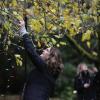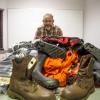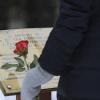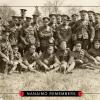May 20, 2008 - 6:52am
Retired Malaspina University-College Physics and Liberal Studies professor Russell McNeil can't wait for May 25. That's the day technology he helped pioneer 35 years ago is expected to land on Mars.
Optech lidar (laser radar) technology, first developed by McNeil and Dr. Allan Carswell in 1972, has been tweaked and fine-tuned into modern day technology currently on board NASA’s Phoenix Mars Lander, launched into space from Florida’s Cape Canaveral August 4.
The Phoenix spacecraft has almost completed a nine month, 680 million kilometre journey to the Arctic region of Mars. On Sunday, May 25 the Phoenix is expected to land near the Martian North Pole and begin its search for water and environmental habitats that could harbour life.
McNeil, a PhD student in early 70s at York University in Toronto, worked with Dr. Carswell, principal investigator in the project and Optech Chairman (Toronto), to develop the first lidar system designed for terrestrial atmospheric research at York’s multi-disciplinary Centre for Research in Experimental Space Science (CRESS).
“Optech lidar technology is at the heart of Canada's contribution to the Phoenix mission – a meteorological weather station that will help accurately model Mars's climate and predict future weather processes,” said McNeil.
“The Canadian Space Agency funded the contribution of the meteorological ( MET) package to NASA, which was designed and built by Optech and MDA Space Missions with input from Canadian and US scientists. The Phoenix lidar will bounce laser pulses off passing clouds and atmospheric dust overhead to determine their composition, movement and size.”
The Mars bound generation of this now miniaturized technology involved contributions from dozens of individuals over many years and has come a long way from the one ton ruby laser “Model T monster ” McNeil and Carswell designed back in the 1970s.
“Our original invention weighed about 30 pounds, and the power supply weighed as much as a refrigerator,” explained McNeil. “It sat on a large12-inch telescope, then on an artillery gun mount built out of aluminum. Obviously it’s been tweaked and fine-tuned dramatically over the years. This is how science works. I’m delighted to realize my boyhood dream of contributing to space research by playing a modest role in helping to seed this exciting adventure so long ago. It’s been a long wait.”
For McNeil, the Mars landing ties in perfectly to the philosophy talked about in his new book, The Meditations of Marcus Aurelius: Selections Annotated and Explained published recently by Skylight Paths Publishing.
“Marcus Aurelius in his Mediations implores human beings to exercise their divine gift of reason to uncover the laws of nature,” said McNeil. “For Marcus Aurelius our reason is what defines our core humanity, and our reason is governed by the same physical laws that govern the workings of the stars. When we explore nature, and when we visit the stars today, we are doing what Aurelius commands. In so doing, we uncover those same laws we were meant to live by. The Stoics demanded that we must live according to nature. We cannot live according to nature until we understand what nature is. Our exploration of Mars is the latest stage in a complex human journey that we humans began nearly two thousand years ago.”
For more information about the Optech lidar (laser radar) technology visit the Canadian Space Agency’s lidar web page at www.space.gc.ca/asc/eng/exploration/phoenix_lidar.asp. For information about Russell's book visit the website at www.malaspina.org/marcus.htm.
Tags: In the Community






